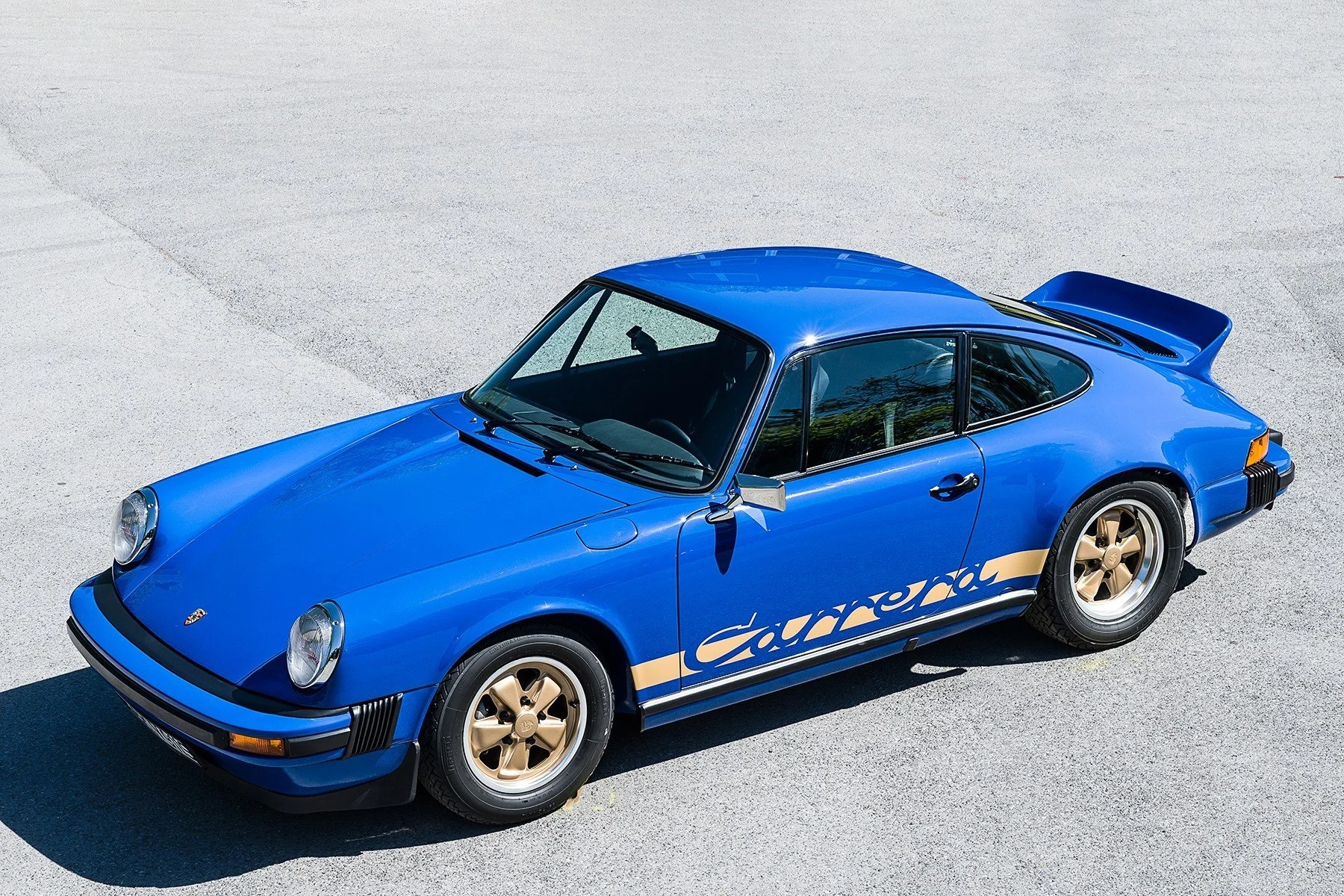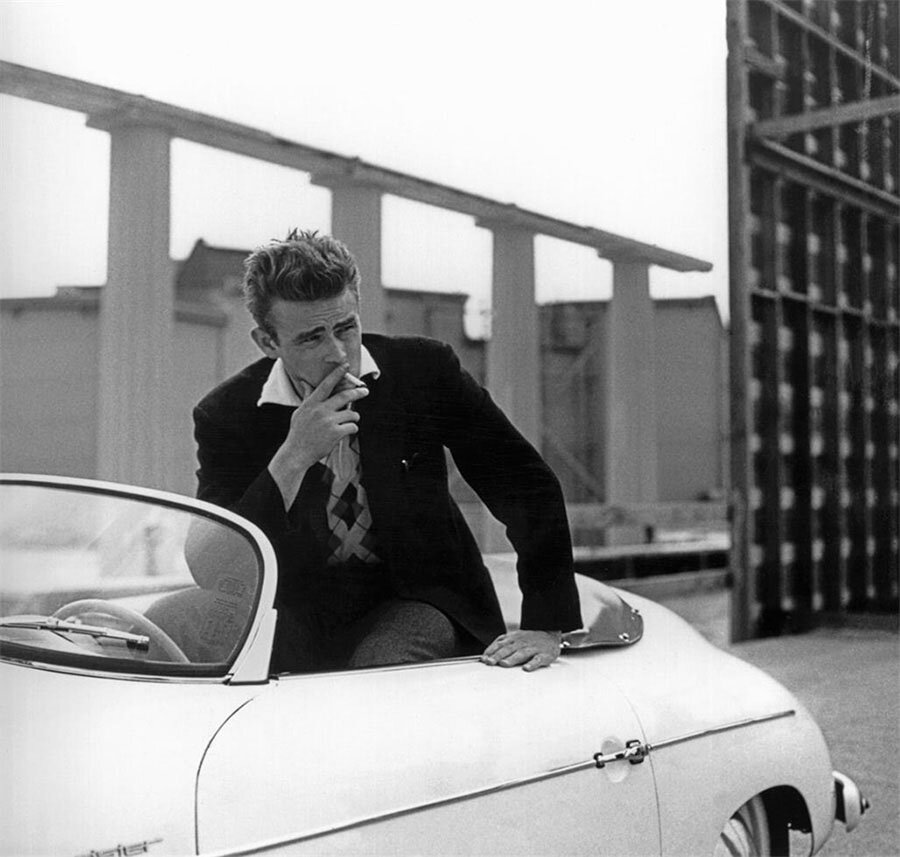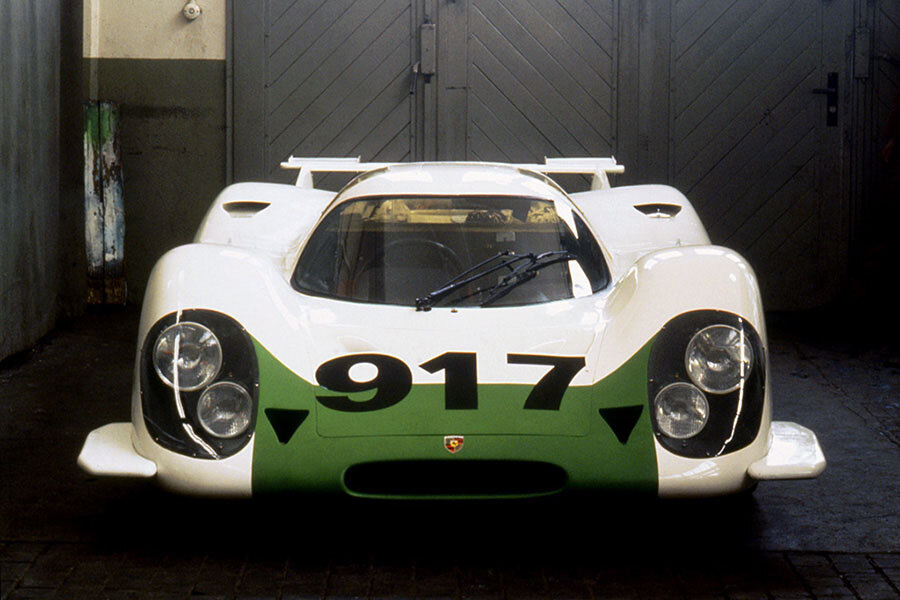HISTORY OF CHASSIS 9306700157
Chassis 9306700157 was one of 31 Porsche 934s manufactured of which all but two were raced.
0157 was delivered to Italian amateur driver, Giuseppe Bianco, who ran his car under a Jolly Club entry often with backing from the famous exotic car dealership, Achilli Motors of Milan.
During Bianco’s ownership, the Porsche was usually maintained by Tam Auto Tuning. The proprietor of Tam Auto Tuning, Giuseppe Tambone, would also occasionally co-drive with Bianco.
Early 1976 saw 0157 take GT class wins in four of its first five events.
These victorious outings included the Vallelunga 6 Hour World Sportscar Championship race and the Targa Florio.
In June 1976, Bianco had the car partially uprated to 934/5 trim with wide Group 5 rear wheelarch extensions. He was still able to compete in Group 4 events when standard rear wheels were fitted. After the 934/5 arches were added, 0157 most notably won the European GT Championship race at Misano.
Bianco retained his white 934 with its blue and orange stripes for 1977. That season, it ran a limited but no less successful campaign.
The highlight was when, co-driven by Arturo Merzario, Bianco won the GT class in the Mugello 6 Hour World Sportscar Championship race. This was followed by second overall and first in class on the Giro d’Italia.
Bianco’s last race with 0157 yielded an outright win at Magione; he then retired from competition.
By 1979, the Porsche had been sold to Roland Ennequin an amateur driver from Paris.
Ennequin ran the car under a Kores Racing entry and contested five big events that season. Now back in standard 934 trim, the car posted three DNFs but did see the chequered flag at Le Mans and the Brands Hatch 6 Hours. Ennequin’s 16th overall and second in class at Le Mans was the year’s undoubted highlight.
0157 was campaigned in a plain white colour scheme throughout 1979.
For its two outings in 1980, an eye-popping black and pink chequered livery was adopted. Due to the paucity of GT class opposition, Ennequin and his co-drivers claimed another second in category at la Sarthe and then third in class at the Dijon 1000km despite quite lowly finishes.
In November 1980, Ennequin sold the 934 to Valentin Bertapelle, a Citroen main dealer from Alsace.
When the car appeared for its next and final outing, it had mysteriously been renumbered 930 670 0177. This was probably done for Carnet reasons to enable some kind of tax dodge.
Bertapelle raced the car just once; it contested the 1981 Le Mans 24 Hours re-liveried in a bright pink colour scheme. Despite finishing second to last, it was the only GT car still running and therefore secured an all-important class win at Le Mans.
In June 1983, Bertapelle sold 0157 to Manfred Freisinger who stored it until 2007.
0157 was then restored in Freisinger’s famed Karlsruhe workshop.
Notable History
Sold to Giuseppe Bianco, Italy (Jolly Club entry)
White with Blue & Orange striped livery
21/03/1976 WCM Mugello 6 Hours (G. Bianco / G. Schon / G. Gargano) DNF clutch (#14)
04/04/1976 WCM Vallelunga 6 Hours (G. Bianco / G. Schon / L. Tommasi) 5th oa, 1st GT class (#12)
02/05/1976 IGT Monza (G. Schon) 1st oa, 1st Gr.5 3.0+ class (#5)
16/05/1976 IND Targa Florio (G. Bianco / G. Tambone) 4th oa, 1st GT 3.0+ class (#45)
30/05/1976 IG4 Varano Trofeo Renzo (G. Bianco) 3rd oa, 1st 3.0 GT class (#??)
Uprated to partial 934/5 specification with wide rear wheelarch extensions
27/06/1976 WCM Zeltweg 6 Hours (S. Frisori / A. Moncini) 10th oa, 9th Gr.5 class (#9)
01/08/1976 EGT Misano (G. Tambone) 1st oa, 1st GT class (#16)
05/09/1976 EGT Monza 6 Hours (G. Tambone / L. Tommasi) 4th oa, 4th GT 1.6+ class (#14)
20/03/1977 WCM Mugello 6 Hours (G. Bianco / A. Merzario) 4th oa, 1st GT class (#18)
17/06/1977 RDC Giro d'Italia (G. Bianco / G. Tambone) 2nd oa, 1st 4/4 class (#499)
10/07/1977 IGT Misano (G. Bianco) ran (#??)
27/09/1977 IND Magione (G. Bianco) 1st oa (#??)
Sold to Roland Ennequin, France (Kores Racing entry)
White livery
Standard 934 bodywork
18/03/1979 WSC Mugello 6 Hours (G. Bourdillat / A.M. Bernard) DNF (#58)
22/04/1979 WSC Dijon 6 Hours (G. Bourdillat / R. Ennequin) DNF (#57)
10/06/1979 IND Le Mans 24 Hours (G. Bourdillat / R. Ennequin / A.M. Bernard) 16th oa, 2nd GT 3.0+ class (#86)
05/08/1979 WSC Brands Hatch 6 Hours (G. Bourdillat / R. Ennequin) 19th oa, 10th GT class (#11)
16/09/1979 WSC Vallelunga 6 Hours (G. Bourdillat / R. Ennequin) DNF (#56)
Black & Pink chequered livery
15/06/1980 WSC Le Mans 24 Hours (G. Bourdillat / R. Ennequin / A.M. Bernard) 24th oa, 2nd GT class (#90)
28/09/1980 WSC Dijon 1000km (G. Bourdillat / R. Ennequin / A.M. Bernard) 14th oa, 3rd GT class (#27)
18/11/1980 sold to Valentin Bertapelle, France
At some stage renumbered 930 670 0177 probably for Carnet
Pink livery
14/06/1981 WSC Le Mans 24 Hours (V. Bertapelle / T. Perrier / B. Salam) 17th oa, 1st GT class (#70)
06/06/1983 sold to Manfred Freisinger, Germany
Text copyright: Supercar Nostalgia
Photo copyright: Supercar Nostalgia

























































